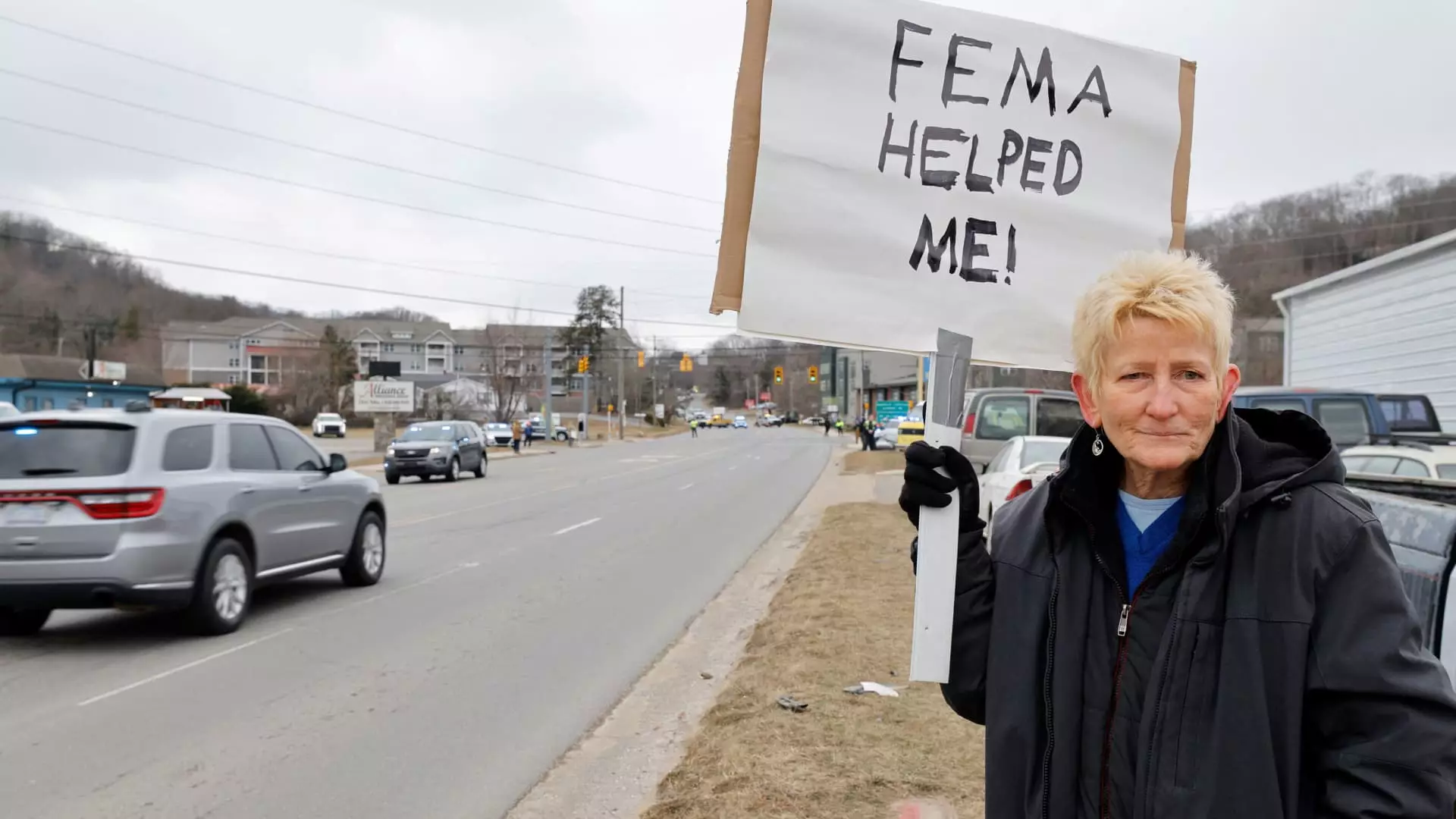The ongoing conversations surrounding the Trump administration’s plan to phase out the Federal Emergency Management Agency (FEMA) raise significant concerns for citizens relying on federal support in times of crisis. As emergency management evolves, the reduction of federal assistance threatens the very foundation of disaster recovery for millions of Americans. Critics, including professionals in insurance and risk management, are highlighting the inadequacies of shifting evacuation responsibilities primarily to states and municipalities in the absence of comprehensive federal aid.
The reality is that FEMA was never a replacement for homeowners’ insurance—an assertion supported by risk management experts like Charles Nyce from Florida State University. Yet, with proposed transitions and funding cuts looming over the agency, it becomes clear that citizens must brace themselves for a bumpy road ahead. As these changes materialize, homeowners, who typically expect aid from FEMA in conjunction with their insurance, may find that the burden of recovery will increasingly rest on their own shoulders. The planned modifications to FEMA’s operational structure could create an unmanageable scenario, stripping individuals and states of the support they desperately need.
Budget Cuts and a Deteriorating Safety Net
The potential $646 million budget cut to FEMA’s operations marks a shocking turn that could decimate the agency’s already fragile structure. The fiscal year 2026 proposal, coupled with the phasing out of specific disaster prevention and mitigation programs, signals a lack of foresight and a reckless disregard for disaster preparedness. As Democratic Senator Raphael Warnock aptly criticized, dismantling the nation’s lead disaster response agency without providing a reasonable alternative is a glaring mistake. All this rhetoric about centralized funds managed directly from the presidency is aimed at modernizing the process; however, it undermines the collaborative effort between federal and state resources critical for disaster recovery.
No one is denying that FEMA has room for improvement, but the idea that handing disaster funds directly over to the federal office streamlines and improves emergency management is naïve. In fact, when the stakes are this high, such a centralized approach scrambles the on-the-ground response that local and state authorities provide. Shouldn’t disaster recovery reflect local needs more than a mere bureaucratic street address?
The Shifting Responsibility to States
One of the more troubling aspects of the proposed FEMA overhaul is the implication that state and local governments will have to shoulder more responsibilities in disaster recovery. Jeremy Porter, an expert in climate implications at the First Street Foundation, articulates a stark reality: the expectation that states will assume a more significant role in disaster recovery while facing federal funding cuts is unrealistic and unfair. As it stands, the efficacy of FEMA comes from its ability to work in concert with state agencies; removing that precious linkage promises to create disorganization when a unified response is urgently required.
Moreover, the average payout for individual assistance grants through FEMA was a meager $3,522 from 2010 to 2019. By expecting states to provide distinct financial support without robust federal backing, the current administration is truly playing with fire. The locality is expected to find funds, implement programs, and manage resources while dealing with the aftermath of disasters that often leave communities desperate for swift action and assistance. Such a shift creates a broken safety net where many will surely fall through.
Empowering Individuals: Insurance Responsibility
In this potential landscape of confusion and uncertainty, it has never been more crucial for homeowners to rethink their insurance policies. The current changes in FEMA indicate that the onus of disaster preparation is shifting directly to individual shoulders. This translates into not just adequate coverage but sufficient knowledge of what your policy entails. More importantly, homeowners must combat the false sense of security that FEMA’s presence has previously provided.
Adding flood insurance to your existing policy or ensuring that your coverage meets current market values could become life-savers. As FEMA funding dwindles, it becomes essential for individuals to build a robust disaster preparedness kit, capable of supporting their families for several days without dependence on outside help. It’s vital to collect and secure critical financial documents, and additionally consider practical survival tools—canned food, a battery-operated radio, medical supplies—items that could prove essential in the face of disaster.
In unveiling these changes and challenges, it remains paramount that individuals position themselves as not simply passive recipients of aid, but active participants in their own security strategies. The path forward may not be aided by a hefty FEMA check; rather, it requires each citizen to undertake serious self-preparation in a world where government support is becoming an ever-diminished resource.

